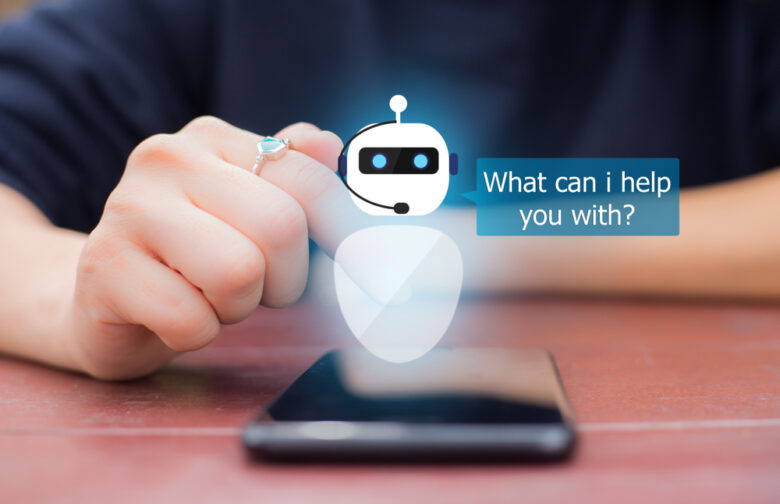Chatbots are becoming an integral part of our digital lives. You may have unknowingly used a chatbot while shopping online, asking questions on websites, or using messaging apps. These tools use technology that mimics human language to assist people, answer questions, and even perform tasks autonomously. By understanding the basic principles of chatbots and how they work, we can better understand how technology can make our online interactions faster and more engaging.
What a Chatbot Really Is
A chatbot is computer software designed to understand and respond to human speech. It can speak or text and is typically built into websites, apps, and messaging services. Chatbots may seem simple at first glance, but they combine programming, artificial intelligence, and data analysis to make conversations sound more authentic. The idea is to make a conversation with technology feel as much as possible like talking to someone else.
How Rule-Based Chatbots Work
Rule-based chatbots are among the simplest bots. They run on pre-built scripts and follow a decision tree. The chatbot searches for keywords in the user’s question and matches them to pre-written answers. For example, if you type “What are your opening hours?” the chatbot sees the word “hours” and provides the saved answer. Rule-based chatbots are less flexible but are suitable for simple tasks and frequently asked questions, and they provide clear answers.
The Role of Artificial Intelligence in Chatbots
More advanced chatbots use AI to enhance the experience and make it more natural. Chatbots that use AI not only follow a fixed script but also use natural language processing and machine learning to understand the meaning of words. This allows them to answer more complex questions, understand situations, and even learn from previous conversations. Over time, these chatbots become more intelligent and provide answers that sound more natural and conversational.
How Chatbots Use Natural Language Processing
Natural Language Processing (NLP) is one of the key technologies used by modern chatbots. With NLP, chatbots can understand how people speak and write. NLP helps chatbots understand the different ways people ask questions. NLP ensures that chatbots understand that questions like “Where is my order?” and “Can you track my package?” may seem different, but they’re actually asking the same question. This process makes it easier and more practical.
Chatbot Customer Service
Customer service is one of the most common applications for chatbots. Many companies have added chatbots to their websites or apps to answer questions such as order tracking, account information, or payment issues. Chatbots can answer questions immediately, reducing customer wait times. If the chatbot can’t provide assistance, it can transfer the call to a live agent. This balance saves companies time and money and helps customers get the service they need faster.
Chatbot Online Shopping
Chatbots are also becoming increasingly important in online shopping. Stores use them to help customers browse products, recommend items, answer inventory questions, and even checkout. Some chatbots can remember customer preferences and make recommendations based on them. Shopping chatbots combine speed, convenience, and personalization to make the shopping process easier and more enjoyable.
Benefits of Chatbots for Users
From a user perspective, chatbots are extremely useful because they provide quick answers. Users no longer have to wait or navigate through long help pages. They can simply ask a question and receive an answer within seconds. This makes many tasks, such as checking order progress or looking up information, much faster and easier. Chatbots are always available, from early morning to late evening, which is another advantage for users.
Challenges Chatbots Face
While chatbots are useful, they’re not perfect. When rules-based chatbots fail to comprehend questions not included in their scripts, their capabilities can be somewhat limited. Chatbots using artificial intelligence (AI) can also struggle with particularly difficult or unusual questions. Users can become irritated if a chatbot consistently provides meaningless answers. Another issue is the difficulty of making a chatbot sound authentic, as robotic or repetitive responses can undermine trust. Chatbots are rapidly improving, but they are still only suitable for certain tasks and can’t completely replace human interaction.
Training Chatbots
Training is essential for AI chatbots to function. They learn how humans make requests by receiving a large amount of information, such as customer conversations, questions, and answers. Machine learning algorithms analyze this data and build models that help the chatbot understand and respond to user needs. The more data and training a chatbot receives, the more accurate and natural its responses become. It’s this training process that improves chatbots over time.
The Future of Chatbots
With ongoing technological advancements, the future of chatbots looks bright. Thanks to the continued advancements in artificial intelligence, natural language processing, and speech recognition technology, chatbots will become increasingly human. They may soon be able to handle more complex conversations, provide more personalized experiences, and collaborate with more smart devices in our daily lives. Businesses are expected to increasingly use chatbots not only for customer service but also for sales, education, and entertainment. Chatbots will evolve from simply answering questions to becoming reliable digital assistants.
Conclusion
Chatbots are changing the way we communicate with businesses and use technology. They accelerate and simplify communication, making them easier to use for everyone, from simple rule-based systems to more powerful AI assistants. They help businesses reduce costs, better serve customers, and connect with them directly. Chatbots help people by saving time, streamlining processes, and being available 24/7. While some challenges remain, the way chatbots operate demonstrates their power. As technology advances, chatbots will become an increasingly important part of our online lives.
FAQs
1. What is a chatbot in a nutshell?
A chatbot is a type of computer software designed to communicate with people through text or speech.
2. Do all chatbots use AI?
No. Some chatbots are rule-based and follow a script. Others use AI to understand what’s happening and improve their communication with people.
3. Why do businesses use chatbots?
Businesses use chatbots to reduce costs, provide 24/7 customer service, and speed up responses.
4. Do chatbots replace human tasks?
Chatbots can repeatedly perform the same tasks, but difficult or sensitive interactions still require human involvement.
5. Will chatbots improve over time?
With advances in AI and natural language processing, chatbots will become smarter, more natural, and more useful.




